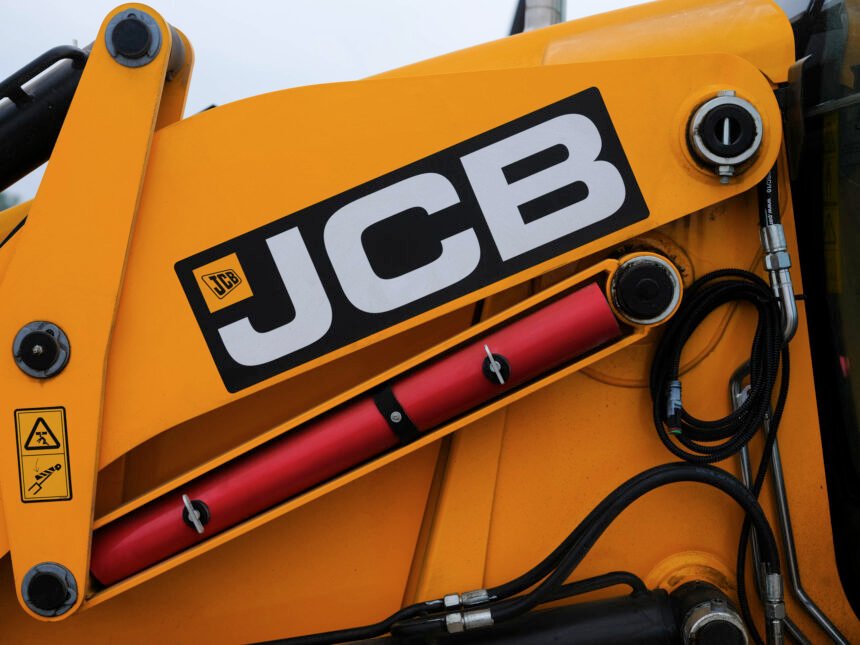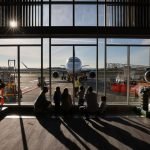Heavy equipment manufacturer JCB said Thursday it plans to double the size of its factory now under construction on the South Side of San Antonio.
The decision comes in the wake of President Donald Trump’s announcement that sweeping tariffs would go into effect on Saturday, news that rocked markets worldwide.
The expansion will enable the Britain-based manufacturing company to sidestep the 10% tariffs imposed on the United Kingdom.
“In the short term, the imposition of tariffs will have a significant impact on our business,” said JCB CEO Graeme Macdonald. “However, in the medium term, our planned factory in San Antonio will help to mitigate the impact.”
Plans call for the $500 million JCB plant, under construction since June, to go from 500,000 to 1 million square feet.
No increase in the number of workers was announced.
The number of employees expected to work at the plant, which received millions of dollars in city and county economic development incentives, remains at 1,500, according to a press release.
From sizable factories like JCB and Navistar to the first new skyscraper in decades and bold plans for sports venues and air terminals, San Antonio’s skyline has seen its share of construction cranes and development deals in the past few years.
JCB’s expansion put an optimistic spin on the tariffs announcement that many economists say could be damaging to the U.S. economy.
The Washington, D.C.-based advocacy group Association of General Contractors (AGC) has warned that tariffs would make construction more expensive and could trigger retaliatory measures that harm U.S. businesses and workers.
“Falling business and consumer confidence, along with rising costs from tariffs, are causing projects to be delayed or canceled,” said Ken Simonson, the association’s chief economist. “These challenging conditions are leading to less widespread job growth than previously.”
Will the gains continue in San Antonio, or will a trade war vanquish a local building spree?
Could Trump’s tariffs affect construction in San Antonio?
Chris Hillyer, whose job as senior vice president and regional director of preconstruction services at Skanska is to help clients optimize their building projects and provide cost-effective solutions, has been working to answer those questions.
Global property developer Skanska, a company founded in Sweden, recently completed Civic Park at Hemisfair and is currently building a new tower at Christus Westover Hills and getting started on a practice facility at the University of Texas at San Antonio main campus.
Hillyer recently spoke with the Report about the impact tariffs placed on building materials like steel and aluminum are having on local construction initiatives.
“The biggest challenge that we are having is that things are changing so very quickly,” he said, making it difficult to estimate schedules and costs.
In some ways, it’s not unlike the economic walloping the industry experienced during the COVID pandemic, he said.
While the supply chain has not been interrupted as it was in 2020-21 when the industry shut down, the cost pressures and rapid pace of change of the pandemic era are similar.
The impact of tariffs so close on the heels of the pandemic, when the cost of capital and interest rates also remain high, could impede recovery and progress.
“In my [29-year] career, I can’t recall any other instance where it’s been kind of this situation, but unfortunately, two times in the last four or five years, that makes it a challenge,” he said.
Hillyer said he has not heard that planned or current projects in San Antonio have been halted or stalled due to the economic climate and tariffs, though the impact could begin to trickle down.
“These impacts and tariffs are targeted at the commodities and for the complex materials and systems that are in buildings,” he said. “The projects that are most at risk for this impact are the ones that have not yet started and that are in the early phase.”
How damaging would tariffs be to future development?
Industry leaders foresaw the possibility of tariffs and tried to project what that could mean for business, Hillyer said. But there were no tangible numbers prior to the November elections that would help it prepare and “brace for the impact.”
“[It’s] very difficult to predict and to mitigate, especially as things keep changing on a daily basis. And one thing you really can’t predict is the impact of how this translates into retaliatory [tariffs],” he said.
In construction, retaliatory tariffs would come into play given materials are often transferred across borders multiple times as components are built, potentially compounding the cost from tariffs. “That could translate to fairly significant owner costs downstream,” Hillyer said.
For now, Hillyer and Skanska’s in-house supply chain team are working to keep up with the changing landscape and hoping for the best.
“One of the primary goals of these tariffs is to strengthen and enhance the ability and capacity of manufacturing,” Hillyer said. “And that might directly translate to actually an increase in manufacturing,” in San Antonio, where the sector has expanded.
But the layers of economic uncertainty combined with high interest rates pose a significant challenge in a city with a lot of momentum and yet “stunted over the last couple of years with respect to new development starts,” he said.
“I do think that with some of the larger developments that we have here in San Antonio — the airport expansion, all of Project Marvel — I think that those projects will [go] into the development phase understanding some of the additional pressures … and they will plan accordingly.”












